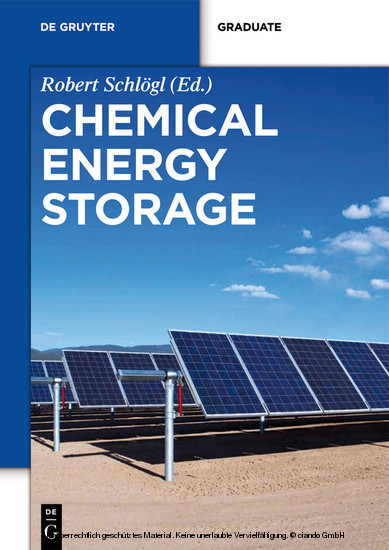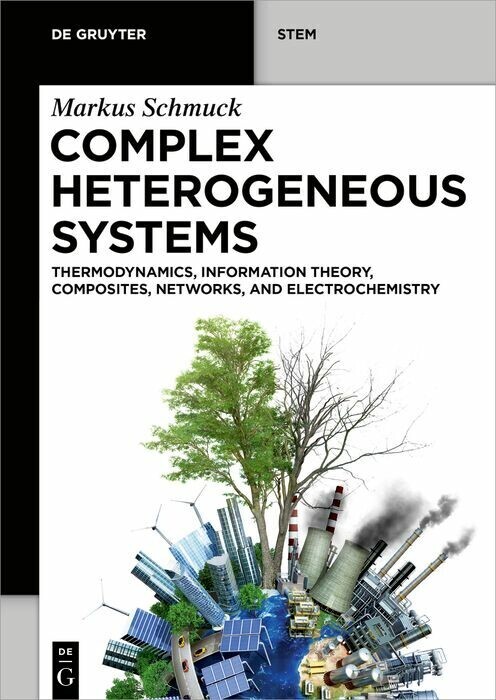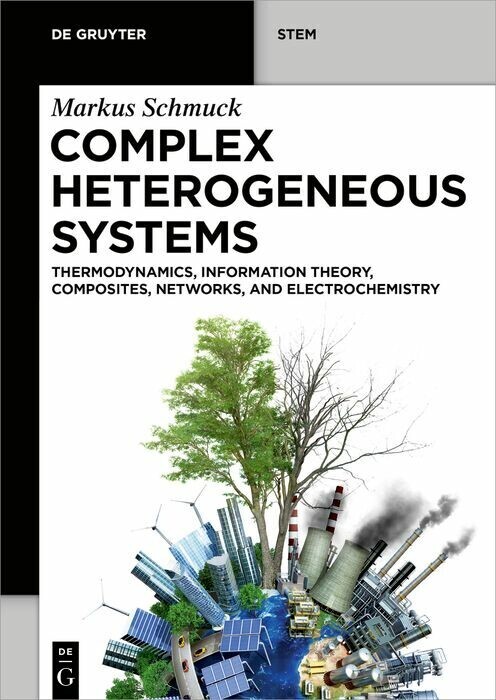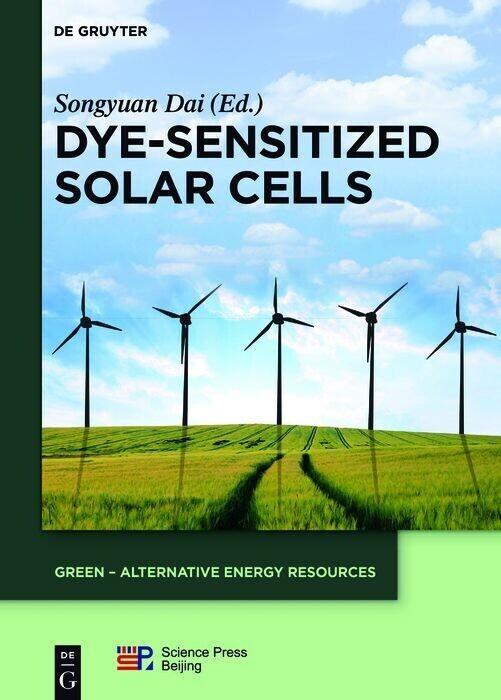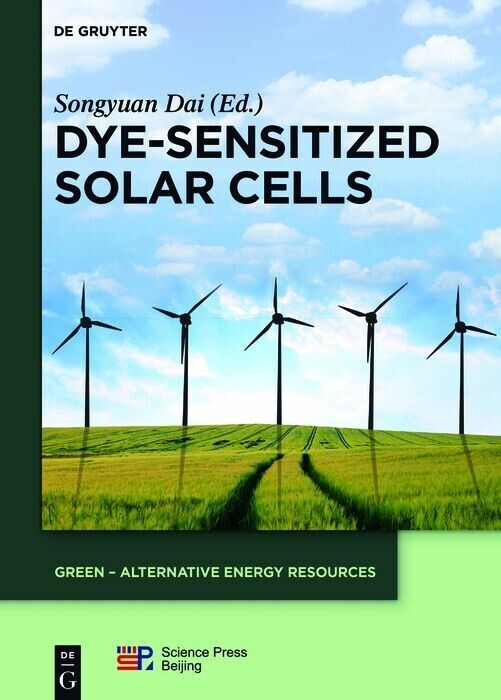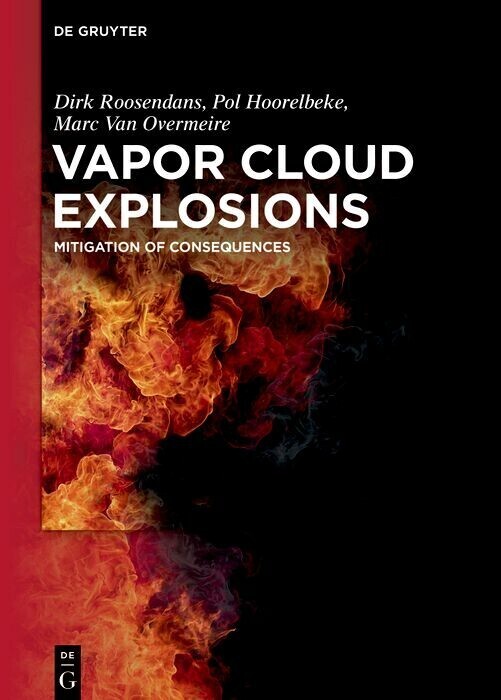Chemical Energy Storage
Energy in the headlines, discussed controversially, vital. The use of regenerative energy in many primary forms leads to the necessity to store grid dimensions for maintaining continuous supply and enabling the replacement of fossil fuel systems. This work provides a hands-on insight into the present status of energy conversion and deals with aspects of chemical energy storage considering the geosphere, electrochemistry, catalysis, synthesis of catalysts, functional analysis of catalytic processes and the interface between electrochemistry and heterogeneous catalysis.
1;Author Index;15
1;Author Index;15
2;1.1 The Solar Refinery;21
2.1;1.1.1 Introduction;21
2.2;1.1.2 The Role of Chemistry in the Energy Challenge;25
2.3;1.1.3 Chemical Reactions and Catalysis;27
2.4;1.1.4 The Design of Catalysts and Processes;36
2.5;1.1.5 The Biological Origin of Our Present Energy System;37
2.6;1.1.6 Chemical Energy Storage: One Long-Term Solution;40
2.7;1.1.7 References;50
3;1.2 Energy Storage Strategies;55
3.1;1.2.1 Introduction;55
3.2;1.2.2 General Considerations;55
3.3;1.2.3 Heat (Cold) Storage;57
3.4;1.2.4 Grid-Scale Storage of Electrical Energy;59
3.4.1;1.2.4.1 Storage on the Transmission Grid Scale;60
3.4.2;1.2.4.2 Storage on Distribution and Medium-Voltage Grid Scale;63
3.5;1.2.5 Energy Storage for Mobile Applications;64
3.5.1;1.2.5.1 Chemical Compounds;65
3.5.2;1.2.5.2 Traction Batteries;66
3.6;1.2.6 Systems Considerations;67
4;1.3 Energy and Society: A Practical Guide;69
4.1;1.3.1 Notes;77
4.2;1.3.2 References;77
5;2.1 Biofuels Derived from Renewable Feedstocks;79
5.1;2.1.1 Introduction;79
5.2;2.1.2 Sources of Biomass;79
5.3;2.1.3 Lignocellulose as Feedstock;82
5.4;2.1.4 Bioethanol as Sustainable Biofuel;83
5.5;2.1.5 Biodiesel as Potential Biofuel;86
5.6;2.1.6 Production of Biofuel via Chemical Transformations of Lignocellulose;88
5.7;2.1.7 Controlled Transformations of Carbohydrates into Hydrocarbon Fuels;92
5.8;2.1.8 Controlled Transformations of Carbohydrates into Novel Biofuels;96
5.8.1;2.1.8.1 Transformations Based on LA;97
5.8.2;2.1.8.2 Biofuel Compounds Based on 5-HMF;99
5.9;2.1.9 Controlled Transformations of Lignin into Potential Fuel Compounds;101
5.10;2.1.10 Summary;102
5.11;2.1.11 Acknowledgment;102
5.12;2.1.12 References;102
6;2.2 Biomass Conversion to Chemicals;107
6.1;2.2.1 Introduction;107
6.2;2.2.2 Classification of Biomass;108
6.2.1;2.2.2.1 Lignocellulose;109
6.2.2;2.2.2.2 Lipids;114
6.2.3;2.2.2.3 Proteins;118
6.3;2.2.3 Selected Key Chemicals;118
6.3.1;2.2.3.1 Cellulose;118
6.3.2;2.2.3.2 Glycerol;119
6.4;2.2.4 Technologies and Requirements for Chemical Production from Biomass;123
6.5;2.2.5 Economic Considerations;124
6.6;2.2.6 Outlook;125
6.7;2.2.7 References;125
7;2.3 Thermal Conversion of Biomass;129
7.1;2.3.1 Torrefaction;132
7.2;2.3.2 Pyrolysis;132
7.2.1;2.3.2.1 Introduction;132
7.2.2;2.3.2.2 Pyrolysis Reactors;133
7.2.3;2.3.2.3 Biomass;134
7.2.4;2.3.2.4 Composition of Bio-Oil;134
7.2.5;2.3.2.5 Utilization of Bio-Oil;135
7.2.6;2.3.2.6 Upgrading of Bio-Oil;135
7.3;2.3.3 Gasification;136
7.3.1;2.3.3.1 Introduction;136
7.3.2;2.3.3.2 Gasification Reactors;137
7.3.3;2.3.3.3 Energy in Gasification;138
7.4;2.3.4 Combustion;138
7.4.1;2.3.4.1 Introduction;138
7.4.2;2.3.4.2 Energy in Combustion;139
7.4.3;2.3.4.3 Co-combustion;139
7.5;2.3.5 Summary;140
7.6;2.3.6 References;141
8;2.4 Biomass to Mineralized Carbon: Energy Generation and/or Carbon Sequestration;145
8.1;2.4.1 Introduction;145
8.2;2.4.2 HTC;146
8.2.1;2.4.2.1 HTC of Biomass Waste for Environmentally Friendly Carbon Sequestration;146
8.2.2;2.4.2.2 HTC for "Carbon-Negative Materials";147
8.3;2.4.3 Mineralized Biomass as Energy Carrier;149
8.3.1;2.4.3.1 "Biocoal" and Its Comparison to Other Biofuels, Biogas and Bioethanol;149
8.3.2;2.4.3.2 Carbon Fuel Cells;152
8.4;2.4.4 Discussion and Conclusion;153
8.5;2.4.5 References;153
9;3.1 Electrochemical Concepts: A Practical Guide;155
9.1;3.1.1 Introduction;155
9.2;3.1.2 Electrodes in Electrolytes;157
9.3;3.1.3 Energetics of Electrode Reactions;158
9.4;3.1.4 The Electrochemical Cell;160
9.4.1;3.1.4.1 The Concept;160
9.4.2;3.1.4.2 Chemical and Electric Energy;162
9.4.3;3.1.4.3 The Maximum Electric Energy Produced and the Equilibrium Cell Voltage;164
9.5;3.1.5 Concentration Dependence of E: The Nernst Equation;165
9.5.1;3.1.5.1 The Nernst Equation;165
9.5.2;3.1.5.2 Concentration Cells;167
9.6;3.1.6 The Temperature Dependence of the Equilibrium Cell Voltage, E;168
9.7;3.1.7 Conclusion;168
9.8;3.1.8 Acknowledgment;169
Schlögl, Robert
| ISBN | 9783110266320 |
|---|---|
| Artikelnummer | 9783110266320 |
| Medientyp | E-Book - PDF |
| Copyrightjahr | 2013 |
| Verlag | Walter de Gruyter GmbH & Co.KG |
| Umfang | 499 Seiten |
| Sprache | Englisch |
| Kopierschutz | Digitales Wasserzeichen |

